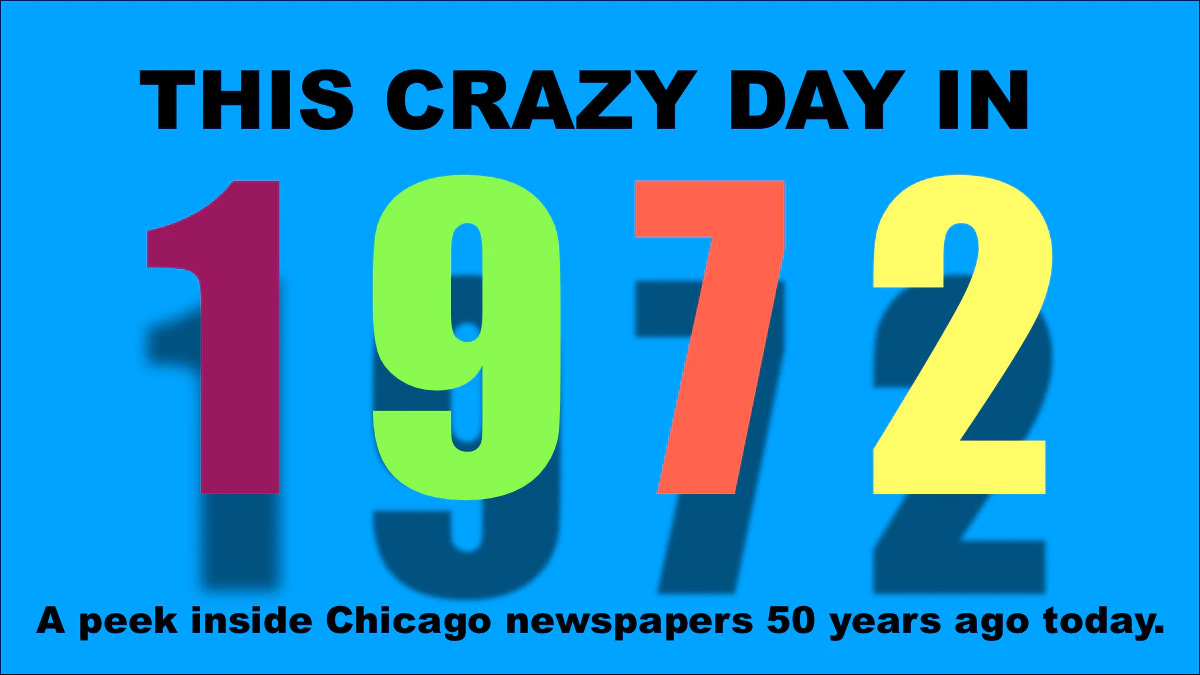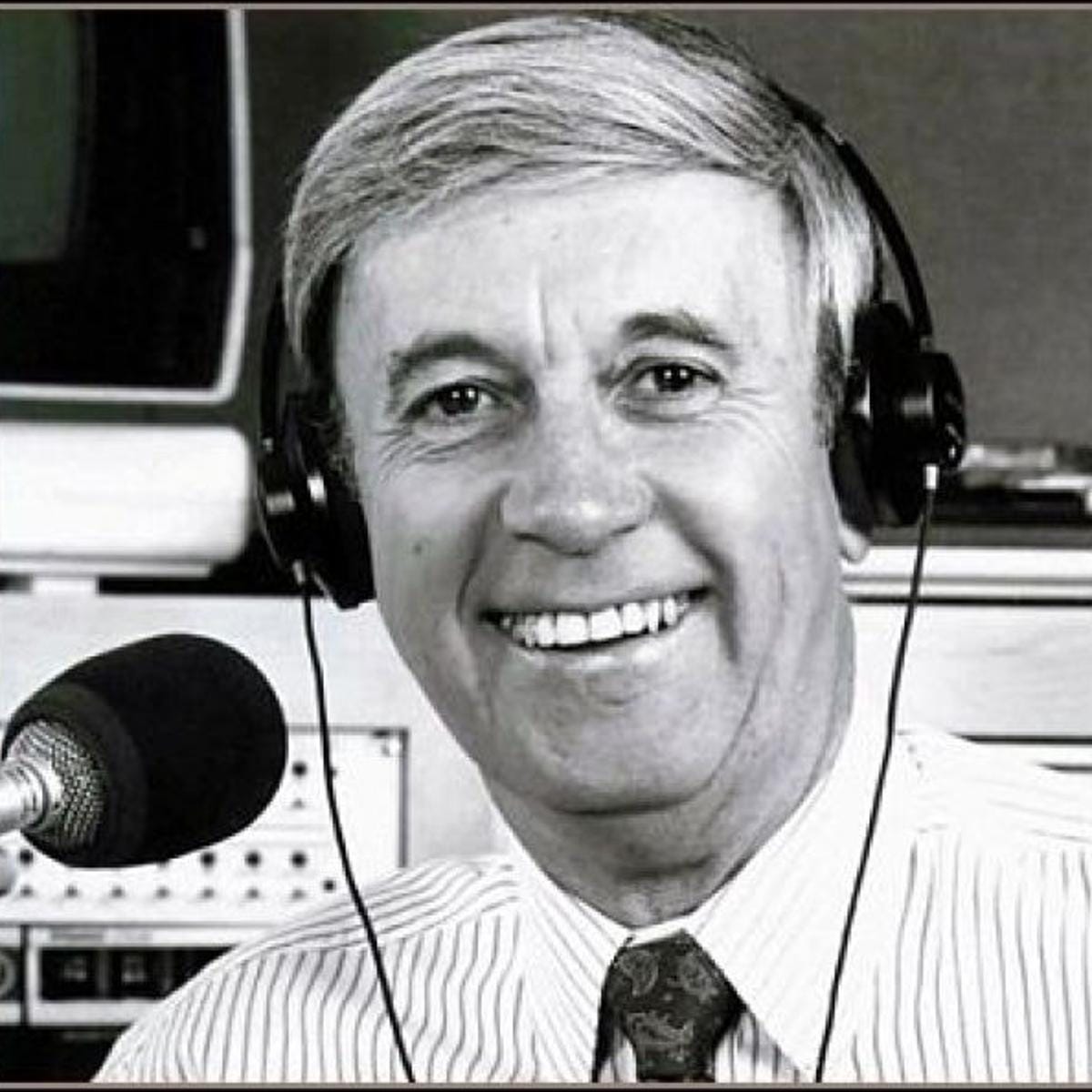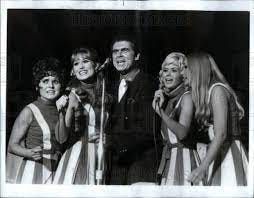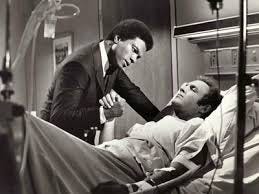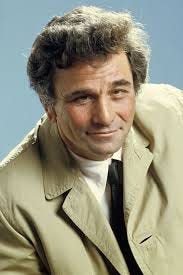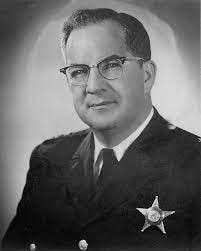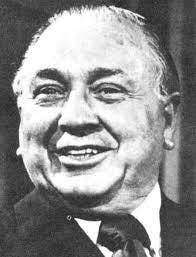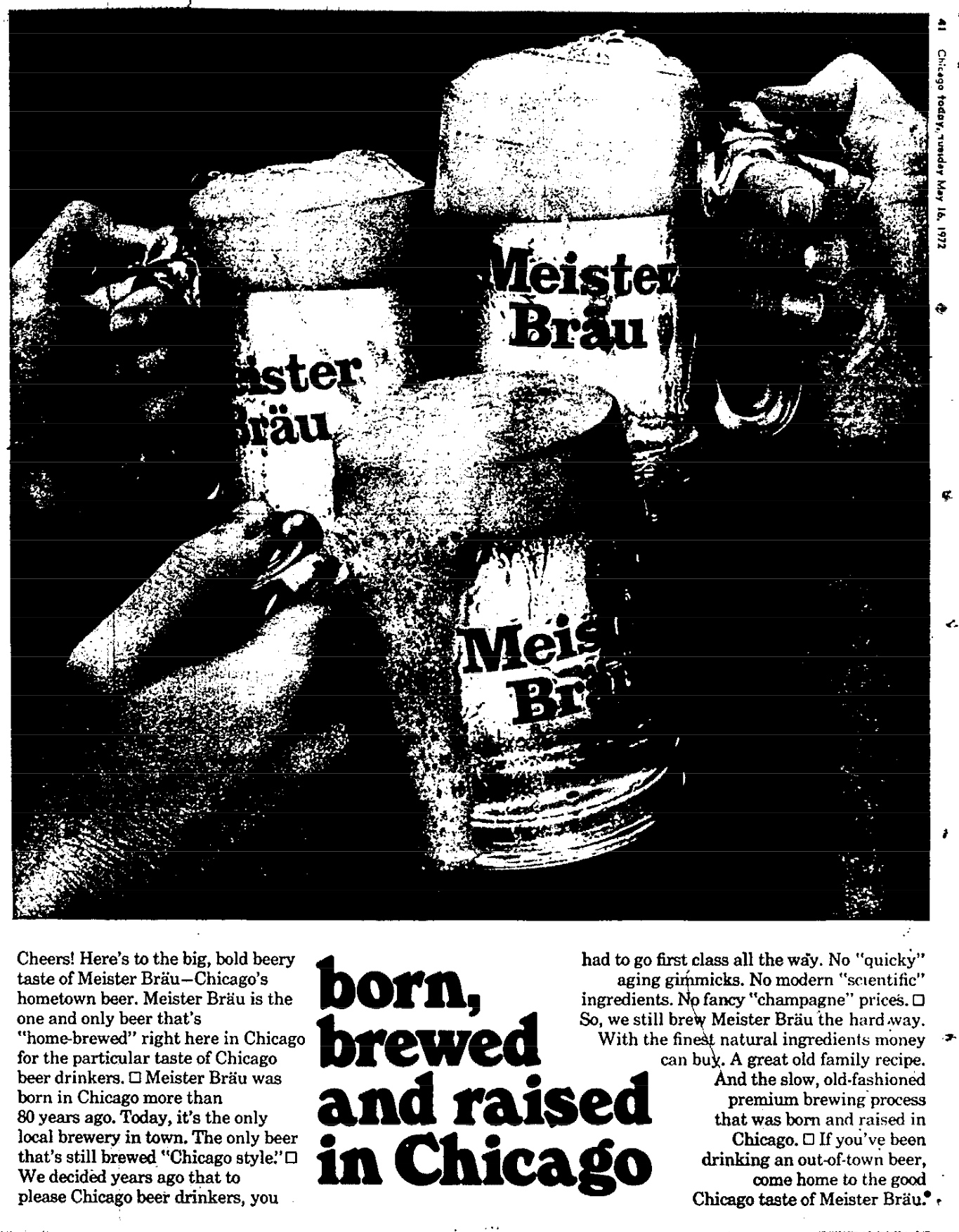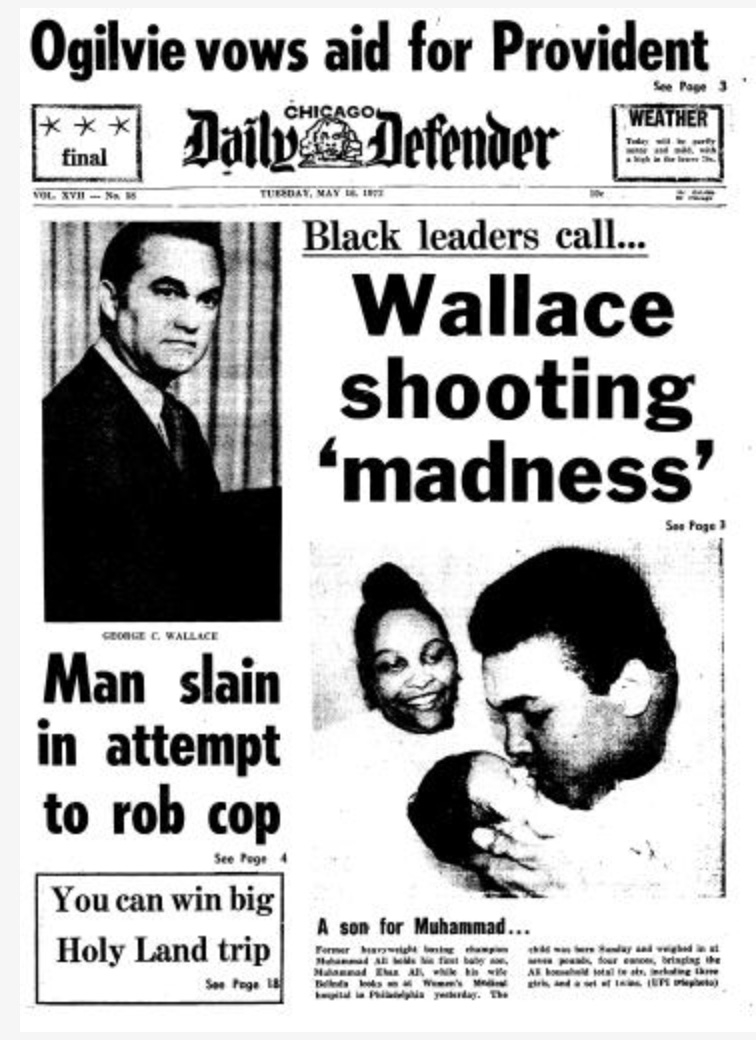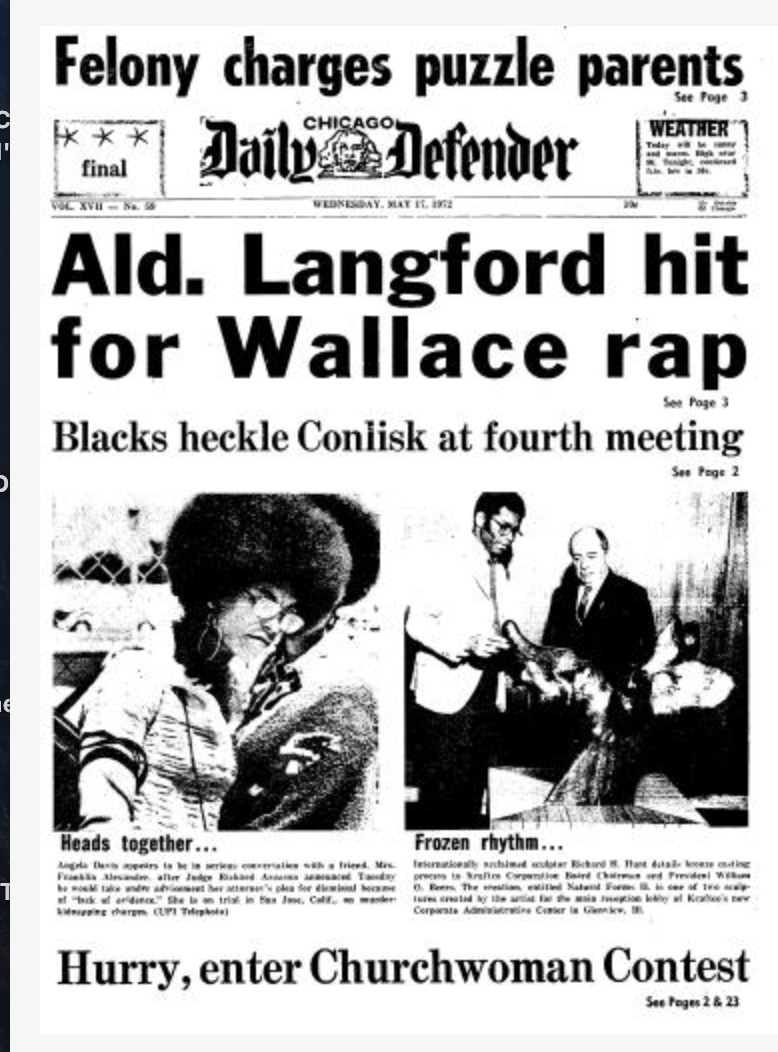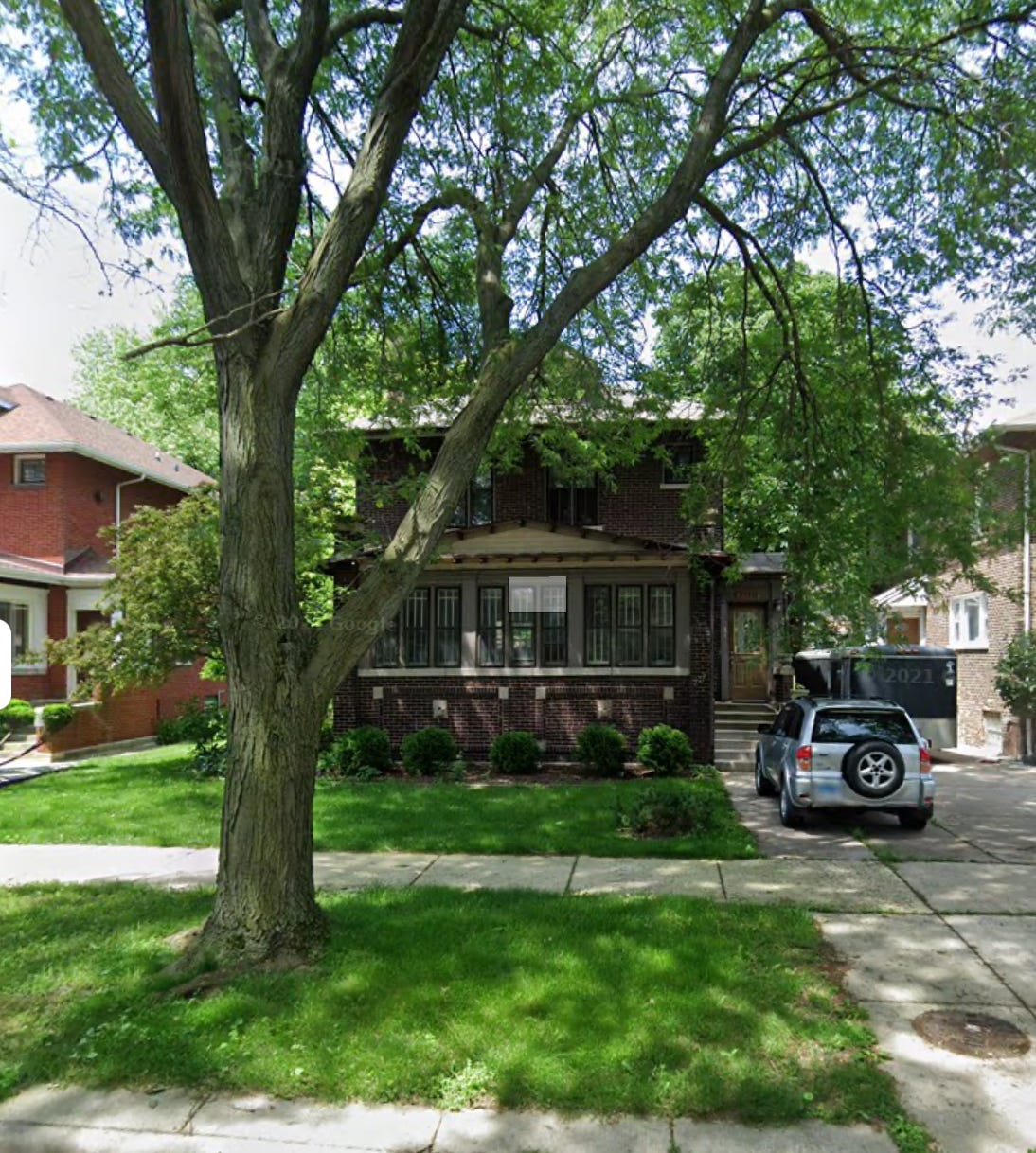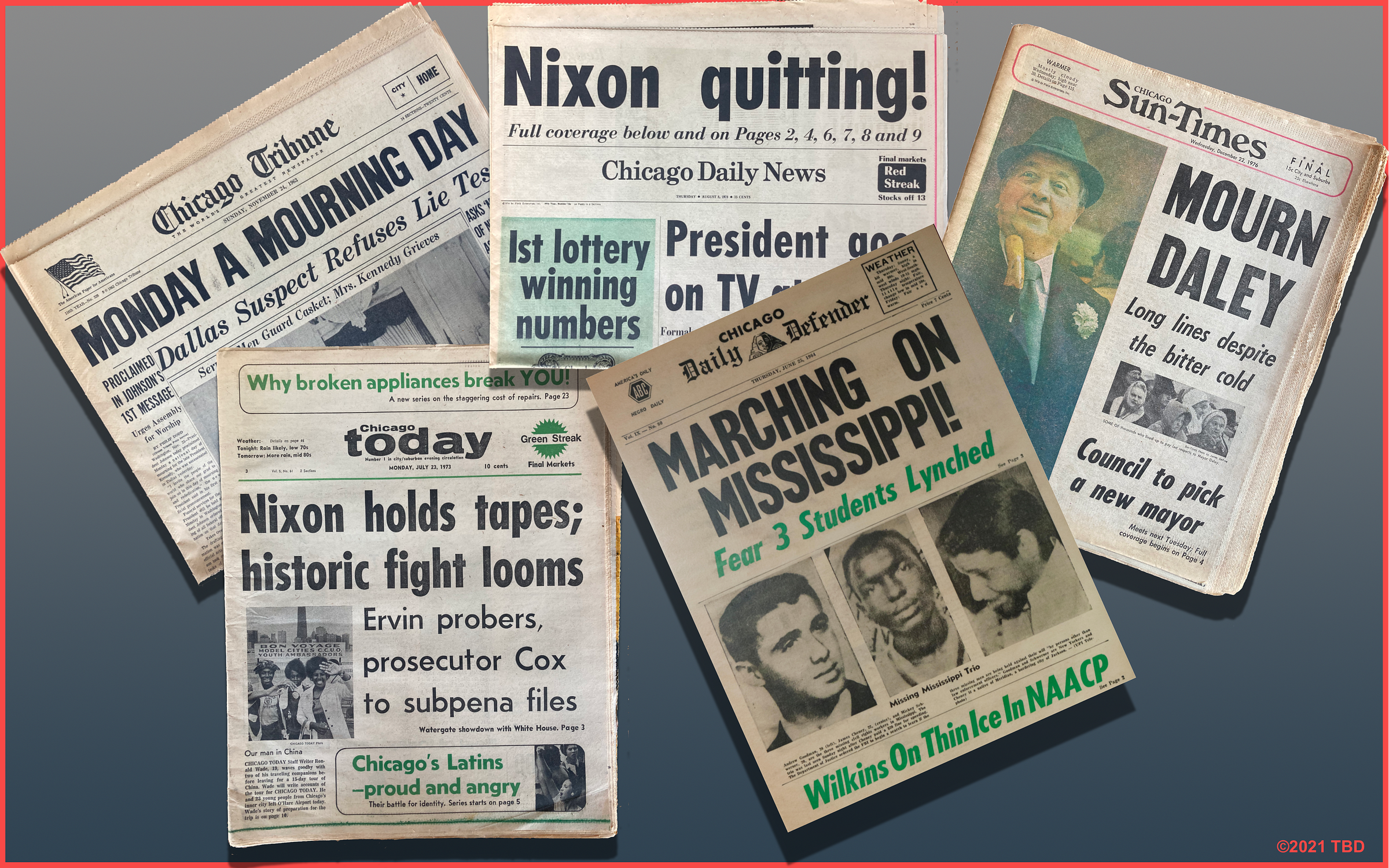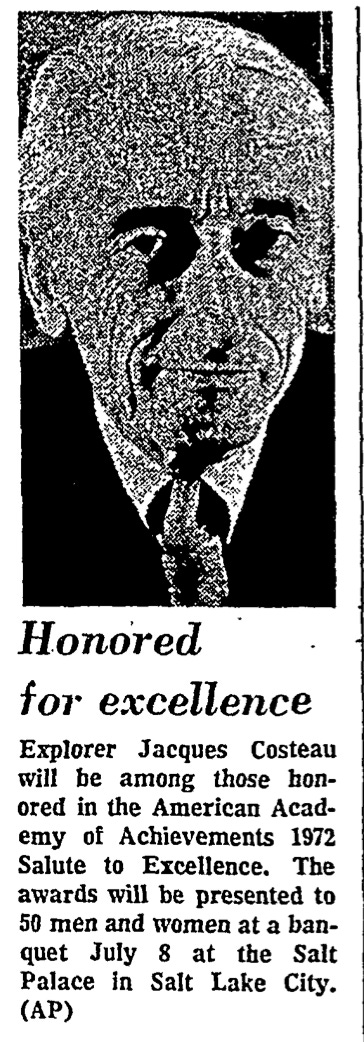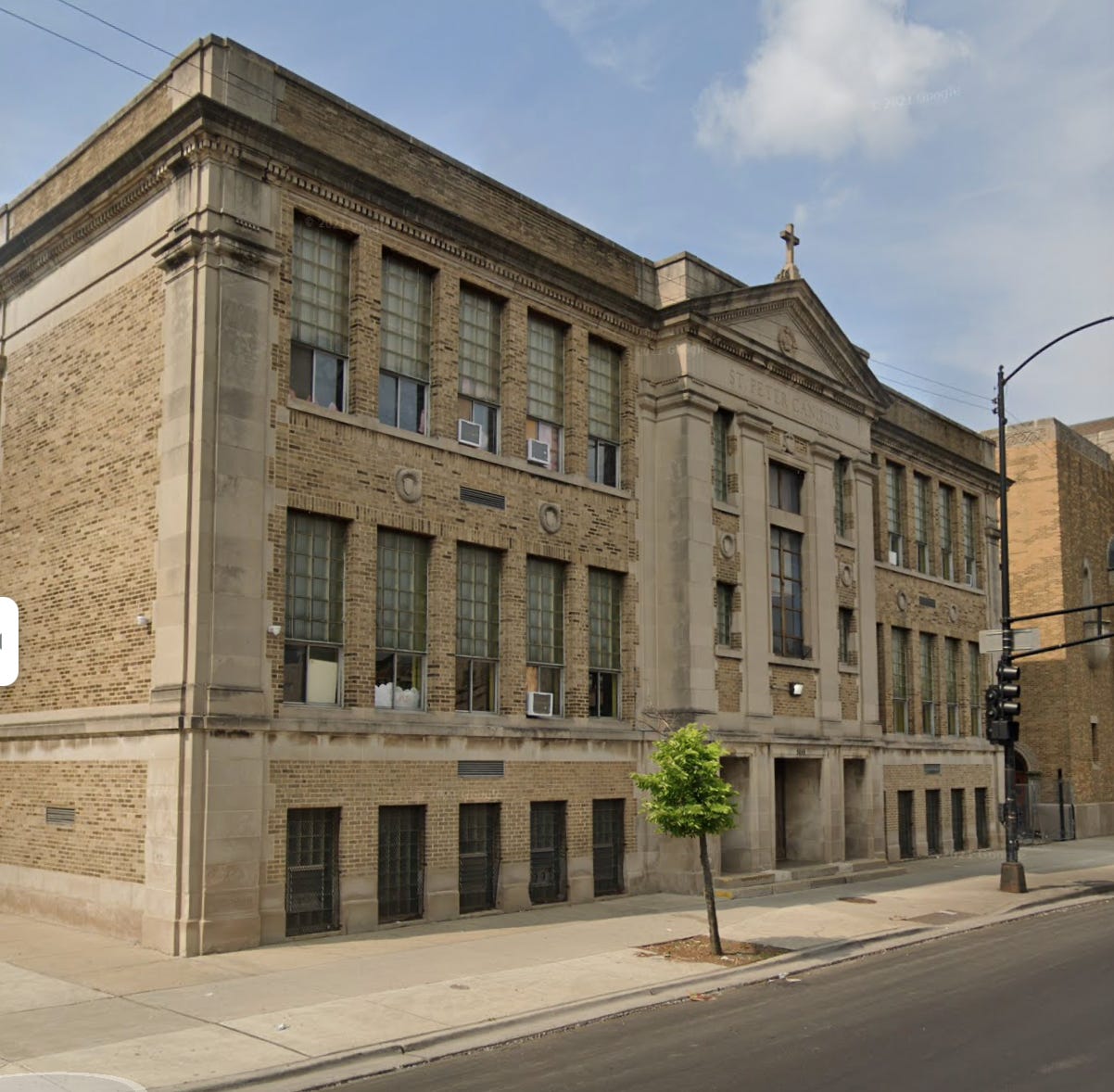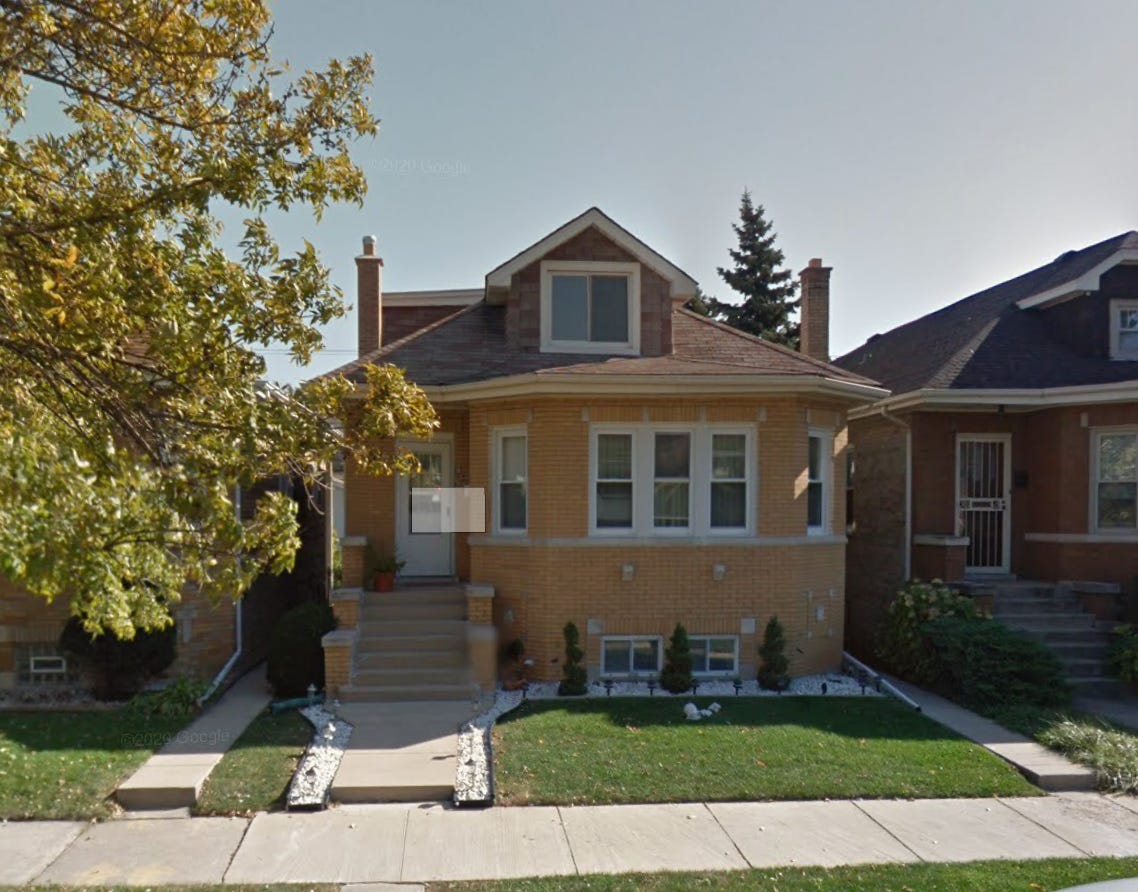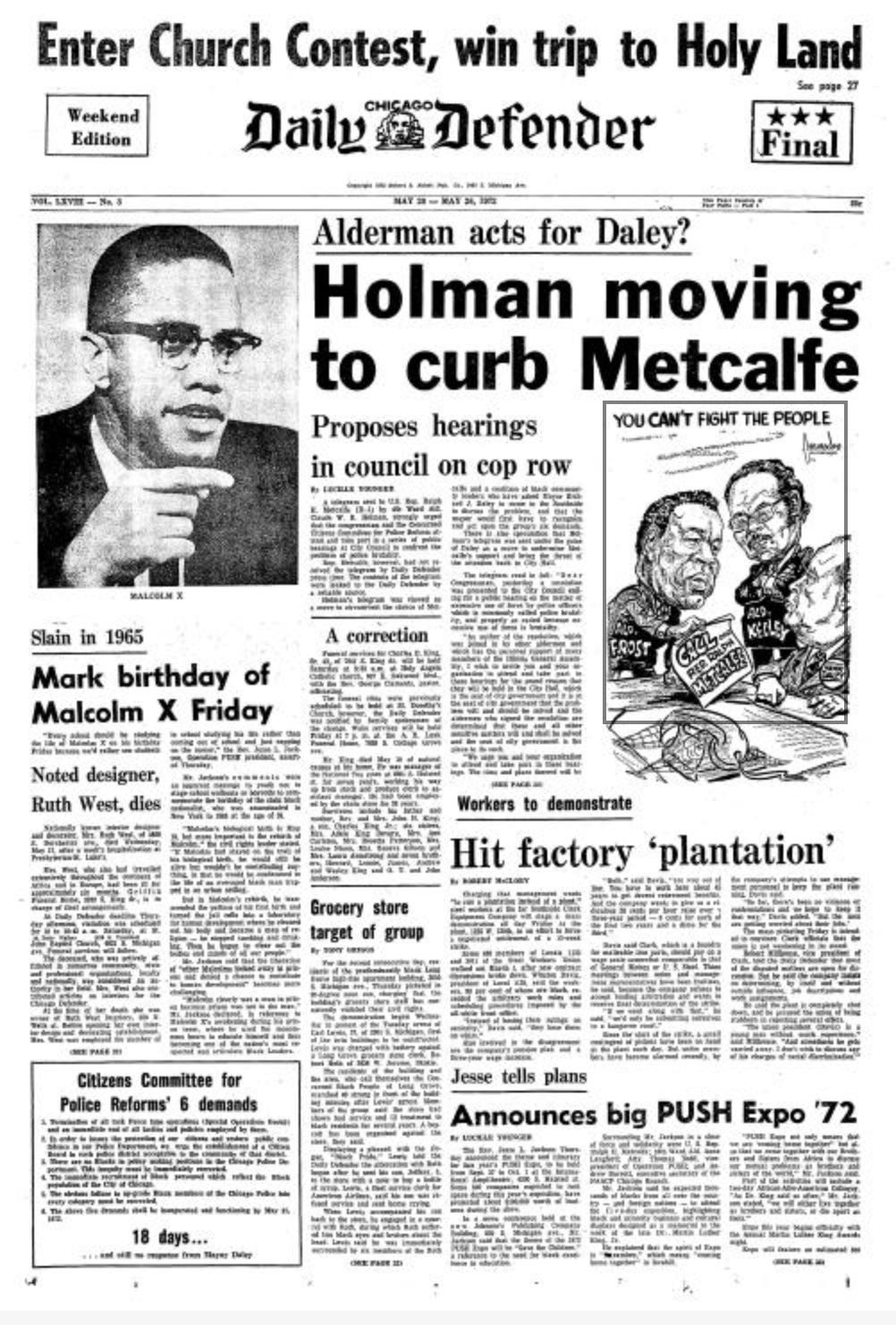THIS CRAZY DAY IN 1972: Waterbeds, bogus parking tickets, and Ald. Langford speaks her mind
May 15-21, 1972
To access all contents, click HERE.
Why do we run this separate item peeking into newspapers from 1972? Because 1972 is part of the ancient times when everybody read a paper. Everybody, everybody, everybody. Even kids. So Steve Bertolucci, the 10-year-old hero of the novel serialized at this Substack, read the paper too—sometimes just to have something to do. These are some of the stories he read. If you’d like, keep up with the 1972 papers every day on Twitter, @RoselandChi1972.
May 15, 1972
Chicago Daily News
This is one of those great two- or three-paragraph stories, no byline, that only made it in the paper because they had a small hole to plug on a particular page. You always see them at the bottom of the page, so my recommendation: Scan the bottom of the pages too as you flip through an old paper or microfilm.
Money quote: “Don’t give me that.”
May 15, 1972
Chicago Daily News
no byline
Chicago Tribune
no byline
Chicago Today
by Michael Hirsley
This story belongs to Today now, which put one of its best reporters on Harold Drumm’s return home for Mother’s Day. If you missed the beginning: The dramatic story of Harold Drumm began on April 10. The bulk of Harold’s news appearances are that week, and the following one.
The dramatic start of Chicago Today’s initial account:
“Because three Chicago policemen rushed to the scene of an accident and dug thru filthy debris for more than a half hour in a race against time, a 13-year-old boy today has a chance for a normal life.
“Their grisly search, thru a dangerous chemical trash compressor yesterday afternoon, produced the boy’s arm, severed when the compressor unexpectedly started up while the youth played inside the machine.”
On Mother’s Day, inside the Drumms’ apartment, Mrs. Drumm gamely answered reporters’ questions. Harold preferred to let her do the talking. Mrs. Drumm reported that Harold was happy to be home, had gone out on the porch, and she had made a special Mother’s Day dinner for him.
So Today’s Michael Hirsley concentrated on Harold’s buddy, waiting outside.
“Richard Wrobel, 14, sat on the landing steps and pretended to look out at the rain, but his eyes followed the two men going in to talk to his friend, Harold.
“The back door to Mrs. Peggy Drumm’s apartment at 1739 W. 43d St. was open. They just left it that way as guests came and went….Richard had come around to the front of the house as the two visitors were leaving. He said he lived at 4336 S. Hermitage Av.—
—and was a seventh grader at Seward School, where Harold is in the sixth grade.”

“‘I’m a good friend of Harold’s,’ he said proudly. ‘I used to take care of him if bigger guys picked on him.’
“Richard said Harold was always ‘kind of quiet. He likes to talk funny, and make us laugh. He’s a little more quiet today.
“‘I didn’t know exactly what to say to him,’ Richard said. ‘I asked him how he was doing and what did Bobby Hull [who visited Harold in the hospital] say to him.’” See the April 14 item here for Hull’s visit. Hull told Harold, “Keep your chin up and make sure you eat well—good red meat and liver.”
Richard said Harold’s friends would give Harold a party. “‘We’re going to clean up my garage for it, I guess,’ Richard said. ‘It’ll be a pizza party. He really likes pizza, you know.’”
According to the Daily News, “The operation successfully restored circulation and Harold has even been able to move the limb slightly. But he will enter the hospital next week for additional surgery to facilitate the use of his arm.”
Are you wondering how the papers decide which dramatically injured or killed children to cover?
Presumably the mainstream dailies still favor white victims, given the year, though I have no numbers to cite. Another extremely high-profile case in the mainstream dailies that I haven’t included has been a young blond girl given up for adoption as an infant, whose mother returned and tried to reclaim her.
But regardless of race, a victim’s tragedy must have some other hook for big coverage. Today’s coverage of Harold Drumm is a reminder of how many more of those tragedies are out there. Today the News briefly mentions, for instance, that 5-year-old Richard Rickey of 5923 N. Artesian remains in a coma. Rickey’s coat sleeve was caught in an escalator at the CTA Clinton St. station on Feb. 12, pulling him into the mechanism, mangling his arm and severing an ear. Even with those dramatic circumstances, I hadn’t noticed Richard Rickey stories—because coverage was almost nonexistent. Richard Rickey only got a mention today because, like Harold, his accident involved an arm.
There is a high-profile injured Black child this year—Joshua Taylor, 14, initially paralyzed by a sniper’s bullet as he walked back to school after eating lunch at home in the Cabrini-Greene CHA complex on December 7. The Daily News covered Joshua first and most because he was a Daily News paperboy. Plus, Bears superstar Gale Sayers, who has a (probably largely ceremonial) role in “advising” the Daily News on its “paper carrier program,” visited Joshua in the hospital. When we last read about Joshua on April 5, he had taken 12 steps as Gale Sayers looked on.
But even the Daily News didn’t start covering Joshua until December 22, and then apparently entirely due to his Daily News connection. A child being shot is not automatically sufficient to get into the papers. Elsewhere, the Tribune gave Joshua’s story two large articles, while the Defender didn’t cover Joshua. I didn’t read Today and the Sun-Times closely enough during those months to be sure of their coverage, and neither are searchable digitally for 1972. The Chicago papers never updated Joshua’s story again after April 5, as far as I can tell in digital archives.
All the dailies except the Defender covered the death of 10-year-old David Munoz, shot by an armored truck driver during a stop at a North Side Jewel on April 1. David’s tragedy unfolded in a busy parking lot on a weekend afternoon. He was just ten, carrying groceries out to cars for customers for pocket change. There are many witnesses whose accounts continued to be reported, plus the ongoing story of what will happen to the armored truck driver who shot David. It’s hard to imagine the dailies passing on that story. Another chapter unfolds today, on May 18.
Harold Drumm drew far more initial coverage and follow-ups from the major dailies than any other child victim this year—none from the Defender—though the dramatic nature of Harold’s story probably made that inevitable. After Harold’s arm was severed by the trash compressor, he ran home three blocks to his mom clutching his empty sleeve.
At this point, the Field newspapers (Daily News & Sun-Times) are losing interest in Harold Drumm follow-up stories compared to the Tribune papers (Trib and Today), as we see today. That’s probably because morning radio king Wally Phillips took over Harold’s story on his show on WGN, owned by the Tribune.
As the Trib concludes its coverage today, “People who heard about Harold have contributed more than $26,000 towards his medical expenses thru an auction on Wally Phillips’ WGN radio program, the W. Clement Stone Foundation, Chicago Today, and other groups.”
We can note that Wally didn’t raise this kind of money for Joshua Taylor, whose fund sponsored by a Daily News customer only had $3,500 the last time Joshua’s story made the paper.
May 15, 1972
Chicago Today
How did we get this far into 1972 without mentioning water beds?
May 15, 1972
Chicago Today
May 15 1972
Chicago Today: Bruce Vilanch’s TV Report
“The nice thing about the Emmy awards is that they are not given for excellence in television,” writes Bruce. “No one on TV pretends there is such a thing. They are given instead for outstanding achievement in television. This means you can be crummy and still win—provided you are less crummy than all the others.”
Don’t you wish Bruce hadn’t made it big in Hollywood and stopped writing about TV for Chicago papers?
Bruce notes that mistakes are part of the Emmys tradition, and luckily CBS “produced a grand harvest of bad lighting, misplaced cue cards, blaring orchestra, drapes that shimmied nervously in the background—all those things that make an awards show great.”
One of the moments to remember, per Bruce:
“Paul Lynde telling Buttons, the Chimp, she had forgotten her Feminique.”
Younger Readers are thinking: “Why a chimp?” and “What is Feminique?” and also probably “What is Paul Lynde?” Answer:
Buttons the Chimp starred on a 1972 show Bruce has referred to, if I recall several times this year, as the worst show ever made—“Me and the Chimp.”

“Feminique” was a douche, so I’m surprised they let Paul Lynde even mention it. But then that’s the kind of thing that only Paul Lynde could get away with in 1972.
Paul Lynde, who sadly had only ten years left to live in 1972, was the reason to watch “Hollywood Squares” and “Bewitched.” A Northwestern drama grad, he started out on Broadway and segued to guest starring roles on nearly every 1960s TV show. On “Hollywood Squares,” he became the permanent center square. Is there a higher TV honor?
As Wikipedia puts it, Paul Lynde was a “character actor with a distinctively campy and snarky persona that often poked fun at his barely closeted homosexuality”. Also per Wikipedia—and this is one time when Wikipedia must be right—Mel Brooks once said Paul Lynde could get laughs by reading "a phone book, tornado alert, or seed catalogue". You may know Paul Lynde’s voice from his portrayal of Templeton the rat in the animated “Charlotte’s Web.”
Here’s Paul Lynde as prankster Uncle Arthur on “Bewitched”:
Back to the Emmys. Host Johnny Carson shone, in Bruce’s estimation, when “Johnny Mann and his ridiculous Stand Up and Cheer chorus of well-paid patriots” got “the nearest thing to a bum’s rush” from Johnny after they “had sung all the eighth-grade America hymns and a giant neon flag had appeared on stage.”
The Johnny Mann Singers are exactly what you’re imagining from Bruce’s description, and they actually had a TV show in 1972. After their interminable performance, writes Bruce, Johnny came back onstage “and announced, ‘War bonds are on sale in the lobby.’ The audience cheered for nearly three minutes.”

“For you people who insist on facts,” Bruce tells readers who won awards.
“All in the Family” was the big winner with six awards including best comedy series, plus best comedy actor for Carroll O’Connor (Archie Bunker), best comedy actress for Jean Stapleton (Edith Bunker) and best supporting actress for Sally Struthers (Gloria). I can’t believe they slighted Meathead.
“Brian’s Song,” the story of the friendship between Bear stars Gale Sayers and doomed Brian Piccolo—
—and Glenda Jackson as “Elizabeth R” each won three Emmy. See Bruce’s March 10 TV Report if you have no idea what a big deal “Elizabeth R” was.
Dick Cavett, whose show is constantly rumored right now in 1972 to be in danger of cancellation due to low ratings opposite the CBS Movie, won for best talk show.
And, of course, Peter Falk won for Columbo. Now THAT was not a mistake.
May 15, 1972
Chicago Daily News Editorial
“Police Supt. Conlisk’s Thursday night get-together with the black community (in contrast with Friday’s more successful effort in the Spanish-speaking sector) blew up in his face.
Note: See May 12 and 13 for the details on Conlisk’s raucous meeting in Lawndale.
But some pearls of wisdom can be found in the debris of that unhappy first meeting, if Mayor Daley and Conlisk will look for them.
“We say Mayor Daley because he remains the key to the problem and its cure.
“Conlisk did the best he could, and kept his cool in the face of some rough abuse by an angry crowd. His six-point program aimed at putting his force into more sensitive and effective touch with the people in the community does not do the whole job, but it is a beginning.”
…. “In particular the black community is incensed at what it considers to be Daley’s stubborn refusal to meet the problem on the community’s terms, with the community’s leaders.
“The key leader is Congressman Ralph Metcalfe, 3d Ward Democratic committeeman and chairman of the Concerned Citizens Committee spearheading the drive to effect reforms that will reduce the upward spiraling of violence between police and blacks.” [See April 25th here for more.]
…. “Metcalfe, asking that his group’s demands be met by May 31, invited Daley to a South Side meeting of black leaders. [See May 2, May 3, May 4, and May 6-7]
“Daley ignored the invitation. Instead Daley set up his own meeting for black and civid leaders at City Hall. Metcalfe boycotted the meeting and so did most black leaders who are not beholden to the Daley administration.”
…. “What will work—and what we strongly recommend—is for Daley himself to go into the black community and find out at firsthand the nature and dimensions of the problems….Metcalfe, we are certain, will gladly arrange a small initial meeting with concerned, disciplined leaders who can state the case with a minimum of acrimony.”
…. “But the main thing at this moment is for Daley to acknowledge the dignity and the deserving of the black community by making a gesture involving a little give on his part. He will do himself and his city a favor by facing the fact that the system itself has failed a substantial part of the community, and must be changed.”
May 15, 1972
Chicago Daily News: Small Kentucky Fried Chicken ad
This can’t be the first Kentucky Fried Chicken ad in the 1972 papers, yet it’s the first one I’ve noticed. Right now, Chicken Unlimited dominates fried chicken advertising—and the Chicken Unlimited ads list so many franchises, the tiny type is hardly legible. See May 6-7 for Chicken Unlimited ads, plus a family photo of the Roseland Chicken Unlimited from Pete Kastanes’ Vanished Chicagoland. But as we know, Colonel Sanders is coming for Chicken Unlimited.
Have you read Chapter One of the book at the center of this website?
Here’s the Unnecessary But Motivating Opening Quote which begins Chapter One. I include it today because Satan is such a great role model here:
Powers and dominions, deities of heaven,
For since no deep within her gulf can hold
Immortal vigour, though oppressed and fallen,
I give not heaven for lost.
—--Satan’s kick-ass pep talk to the fallen angels cast into hell after failing to overturn God’s totalitarian regime, Paradise Lost; John Milton, 1667
May 15, 1972
by Robert Gruenberg
“Laurel, Md—Gov. George C. Wallace was shot by an unidentified assailant Monday in the Laurel shopping center, just after he had finished addressing a crowd of about 1,000 persons.
“Wallace fell to the ground and blood began to pour out of the right side of his chest.”
Gruenberg was standing ten feet away from Wallace when he was shot. The assassination attempt took place so late in the day, this is literally all the information the Daily News gave in a few short paragraphs on the front page of this edition. The rest will come tomorrow.
Wallace was notorious for his opposition to desegregation, including his inaugural declaration, “segregation now, segregation tomorrow, segregation forever.” During his first term as governor, Wallace stood in the doorway of a University of Alabama building to physically block Black students from entering.
May 16, 1972
Chicago Daily News: Daily News man 10 feet from him
By Robert Gruenberg
This needs a big chunk of the article verbatim.
“He had just wound up the typical George Wallace rally—half political and half revival.
“The shopping center crowd had been slow to warm up to Wallace at first, but he had completely captured it by the end of his speech.
“There was tremendous cheering as he finished. Wallace descended the steps of the platform and began shaking hands.
“….I elbowed forward to ask the governor a question.
“Then I heard four or five sharp reports.
“‘Dammit,’ I thought. ‘Who is shooting off firecrackers now. It gets the Secret Service up tight and creates difficulties with the cops.’”
“Suddenly I heard screams.
“The crowd for a moment thinned in front of me. I looked down and saw Wallace lying on the pavement about 8 or 10 feet from me. His right arm was stretched at about a 45-degree angle from his body.
“The blood from a wound in his chest was making an ever-widening stain as it flowed across his white shirt.
“I ran toward the entrance of a small branch bank of the Equitable Trust Co. of Baltimore to grab a telephone and call The Daily News in Chicago.
“Out of the corner of my eye, I caught a glimpse of the crowd in a wild maelstrom converging on somebody or something.
“I later learned that it was the man who was seized as a suspect and pummeled and kicked before the Prince Georges County police rescued him from the crowd.
“There were scattered shouts of anger, with at least one person shouting, ‘Kill him.’”
May 16, 1972
Chicago Tribune: Political leaders here decry shooting
By Ronald Yates
The Trib’s Ronald Yates gets reactions from Illinois’ politicians on the shooting of Alabama Gov. George Wallace, candidate for the Democratic presidential nomination.
“‘The demented mind that has brought about this terrible act has once again stained the reputation of this country,’ said Sen. Percy (R-Ill.].”
“It is as tragically senseless as the attacks on John Kennedy, Martin Luther King and Robert Kennedy,” said U.S. Rep. Rep. Roman Pucinski, the Democrat running against Percy for Senator. “It makes a mockery of free elections and denies all Americans their fundamental right to free speech.”
“‘He is a violent man and when you live violently you die violently,’ Ald. Anna Langford [16th] said when informed of the shooting.”
Ald. Seymour Simon (40th) said the Wallace shooting “shows again that federal action is needed to control our weapons.”
May 16, 1972
Chicago Daily News
Dick Gregory is a prominent Chicagoan during this time period, both a traveling stand-up comedian whose family lives here, and a civil rights leader who sometimes heads his own demonstrations. To catch up on Dick Gregory—so worth it—Showtime put out the documentary “The One and Only Dick Gregory” last year. Here’s the YouTube trailer. You can also download Dick Gregory albums from iTunes and elsewhere.
May 16, 1972
Chicago Today: Full page ad
May 16, 1972
by Lucille Younger
“The news of the shooting Monday of Alabama Gov. George Wallace was received with apprehension and dismay by black leaders—both nationally and here in Chicago,” writes Lucille Younger.
“In their statements, they indicated belief that the incident in Laurel, Md. may well be a yardstick for measuring events in the future.
“‘This is an example of our national madness,’ was the official reaction from the office of Gary Mayor Richard Hatcher.
“U.S. Rep. Ralph H. Metcalfe told the Daily Defender, ‘Violence creates no solutions. Dialogue with those holding opposing opinions must continue in a democratic climate.’”
Metcalfe added his prayers for Wallace’s “swift recovery.”
The Rev. C.T. Vivian, executive director of Chicago’s chapter of the Southern Christian Leadership Conference, said Wallace “has to be defeated in open conflict of thought”.
May 16, 1972
Chicago Daily Defender
“Laurel, Md. (UPI)—A would-be assassin fired at least three shots into Gov. George C. Wallace at near point blank range Monday, seriously wounding him as he campaigned for the Democratic presidential nomination. Reports from the hospital indicated the possibility of serious spinal damage.
…. “I would say in medical terms, he is alive,’ said a hospital spokesman.”
…. “Police at the scene arrested at least one young white man.” Authorities didn’t disclose the man’s name, but said he was from Milwaukee.
May 17, 1972
by Lucille Younger
“The Southside law office of Atty. Anna Langford was beset with a barrage of telephone calls yesterday, admonishing the 16th Ward Alderwoman’s outspoken reaction to the shooting of Alabama Gov. George C. Wallace on Monday.
“Mrs. Langford, however, was not in Chicago to receive the calls.
“Hours after Gov. Wallace was shot four times by a would-be assassin, Ald. Langford candidly told reporters what she personally felt about the incident: ‘I’m not surprised. You live violently, you die violently. He’s a violent man.’
“The quote—now famous—was published in a Chicago daily newspaper on Tuesday.” The Defender speaks of the Tribune account quoted above—but following typical Chicago paper protocol, doesn’t name the competition directly.
Other Black leaders contacted by the Defender “deplored the incident in Laurel, Md. as being ‘insane.’”
A woman who identified herself to the Defender only as a “very, very close and dear friend” of Langford’s answered the calls at Langford’s office. She told Lucille Younger that Langford’s quote “was an honest reaction on her part—probably more honest than most. Mrs. Langford is not a hypocrite and never has been.’”
If you’re a regular THIS CRAZY DAY reader, you’ll probably want to follow Mike Royko 50 Years Ago Today too.
May 17, 1972
Chicago Tribune: Johnson Shows ‘Exhibit A’
by Lynn Taylor
John H. Johnson officially opened Johnson Publishing’s new $7 million 11-story building at 820 S. Michigan Avenue—not mentioned here, but designed by John Moutoussamy and according to Wikipedia still “the only Chicago high-rise designed by an African-American.” It’s an official Chicago landmark.
Naturally, Mr. and Mrs. Johnson gave Mayor Daley a tour after the official dedication ceremony.
“The company has grown from a $500 investment in 1946 to a $20 million annual business today with $12 million annually from magazine advertising, Johnson said….Ebony’s circulation is not quite 1.3 million, double that of six years ago. Johnson’s goal is to push this to 2 million.”
“When asked why he lavished so much money on the building [the interior cost at least $1 million] he replied that as the company has grown over the years he had rehabilitated four different buildings.
“‘As a black person I wanted to build something new,’ he said. ‘It will be a good, symbolic thing for black people.’”
Two sites to visit for more on John Moutoussamy and his work are “John Moutoussamy at 100”, a terrific essay by Iker Gil at mascontext.com with a lot of pictures of Moutoussamy’s other work, including his own home in Chatham; and “Making History—and a Landmark” by Andrew Connor for Illinois Tech, focusing on the Johnson Publishing headquarters.
May 17, 1972
Chicago Daily Defender
“Mayor Richard J. Daley lauded the accomplishments of black publisher John H. Johnson and noted that there are other great opportunities for black citizens in the city of Chicago during the ribbon cutting ceremonies at the $6 million JPC building Tuesday morning.”
“Lerone Bennet Jr., noted author and JPC editor, was master of ceremonies. He pointed out that it was commendable that the first solid structure in the city was built by a black man, Jean B. DuSable, just north of the Chicago River, also on what is now Michigan Ave.”
In his own remarks, Johnson said when he started the company, “it would have taken a building twice the size of this new structure to house all the creditors and cynics he faced….He noted that…the company was started in one corner of a law office at Supreme Life; then moved to a four-room structure at 5619 S. State; to 5125 S. Calumet and in 1949 to a renovated funeral parlor at 1820 S. Michigan.
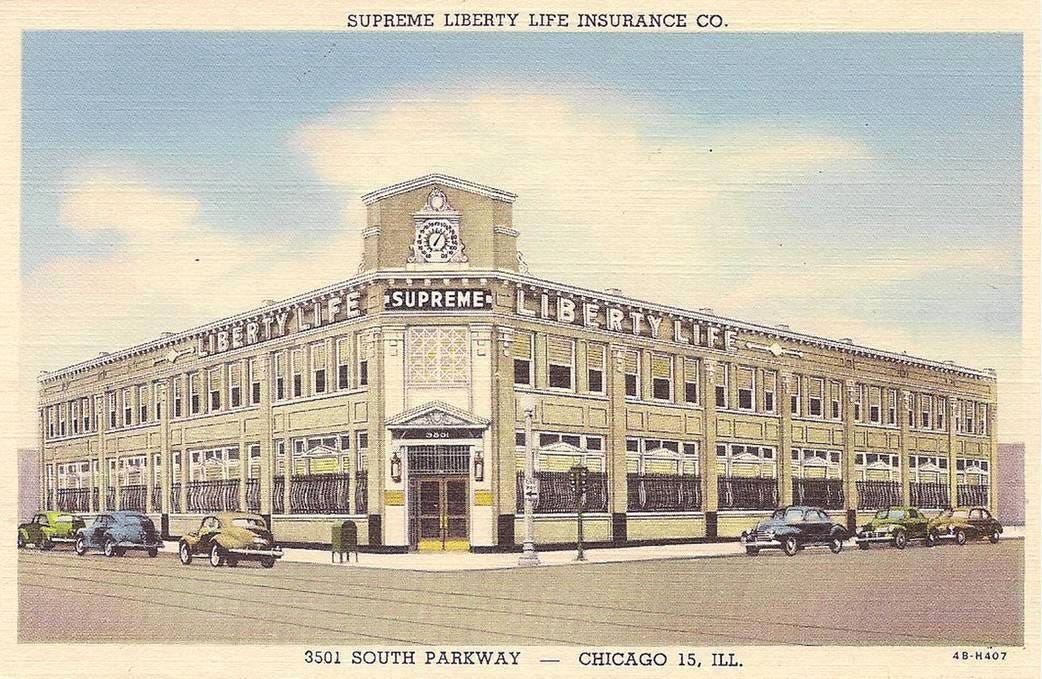
“JPC’s fifth home…is an eleven story high glass, marble, steel and concrete building of approximately 138,000 square feet.”
“John Moutoussamy, a black partner in the firm of Dubin, Dubin, Black and Moutoussamy, was the architect in charge of design and construction.”
By the way, I included that type directly from the Defender in the second paragraph to illustrate the paper’s “Find Your Name Contest.” I included “Find Your Name” a couple of weeks back, and forgot to show how it worked. When you read the Daily Defender, every once in a while you come across teeny, tiny type between the other sentences, spelling out a name and address.
In today’s article, a potential winner hiding in that paragraph of type above was Lorraine Thigpen of 7136 S. Oglesby, in South Shore. Let’s hope she read the paper today and claimed her prize.
Check out the chapter on Chicago Newspapers, Circa 1972 here!
May 18, 1972
Chicago Today
Chicago Daily News
by Barry Felcher
“A father’s rage and a security guard’s tears disturbed what was supposed to be a sedate inquest into the shooting death of 10-year-old David Munoz,” opens Chicago Today’s unbylined story.
“As the coroner’s jury returned a verdict of ‘accidental death’ yesterday, David’s father, Lorenzo, leaped from his seat and began shouting at Ronald Brannan, 26, who shot David from inside his armored truck.
“‘You murderer!’ stormed Munoz. ‘Someday I’ll get you. What kind of jury is that that calls it an accident?’
“Brannan collapsed in sobs and had to be led from the hearing room by his wife.”
The tragedy unfolded on April 1 in the parking lot of a Jewel then at 3132 N. Sheffield, when the Armored Express truck pulled up and Brannan’s partner went inside. Brannan felt threatened by a group of nearby teenagers, though his partner testified at the hearing that he did not see any problem. Brannan testified that he feared a robbery and set his gun in a porthole, where it went off by accident, hitting David Munoz.
According to the Daily News, the Munoz family’s attorney, Bernard Ostrowsky, asked Brannan if he had cocked his gun. Brannan answered, “I must have cocked it.”
The Munoz family has filed a $1,504,000 lawsuit against the armored truck company.
May 18, 1972
Chicago Today
May 18, 1972
Chicago Daily News
You’re not getting out of 1972 without seeing Jacques Cousteau at least once. Normally he was seen in his hour-long television specials, following the adventures of his oceanic scientific vessel, Calypso, and its crew—in prime time, and in subtitled French, which was definitely unusual in 1972.
May 18, 1972
Chicago Today: Crosstown!
by Michael Hirsley
“Crosstown Associates, planners of the proposed 22-mile expressway, have inadvertently fanned the flames of opposition on the West Side,” writes Hirsley. The Crosstown Expressway is Mayor’s favorite pet project, especially now that he’s had to dump his dream, an airport in the lake eight miles off 55th Street.
“While leaders of community organizations opposed to the Crosstown built their case last night at a meeting in the St. Peter Canisius School Hall, 5035 W. North Av., Crosstown Associates sent a representative who was unable to answer any questions from the audience of 200 persons.
“Thomas R. Weisensel…showed an 18-minute slide with a taped narrative, and said he was not qualified to do more.”
Audience members pointed out the slide show was old and outdated, showing landscaping and other improvements that have already been dropped from the plan. Weisensel just said, “I don’t know about that.”
Crosstown Associates didn’t send anyone at all to another anti-Crosstown meeting at Gethsemane Lutheran Church, 50th Avenue and 21st Street, Cicero. The meetings are designed to whip up support for the big anti-Crosstown rally this coming Sunday.
“Motorcades including 30 buses will begin at 1 p.m. at more than a dozen points along the proposed route and converge on Cicero Avenue at 55th Street. Participants will then march from 55th and Kostner Avenue to 55th and Laramie Avenue, where the rally will be held in a large parking lot.”
“Kostner and Laramie are the boundaries of the ‘corridor’ within which homes could be torn down for the Crosstown.”
Picture everything from Kostner to Laramie on the South Side covered by asphalt.
May 18, 1972
Chicago Tribune: Aldermen Ham It Up on TV
by Edward Schreiber
Last month, Channel 11 decided to start televising Chicago City Council meetings live, and Mayor Daley gave his approval. We’ll see how long this lasts—the practice was long gone, but a dim memory, by the ‘90s.
The Trib’s City Hall reporter Edward Schreiber does a nice job here, but you’ll also want Mike Royko’s take. See coverage of his May 18 column in this week’s Mike Royko 50 Years Ago Today.
“There wasn’t a white shirt among the aldermen, and many arrived in blue suits,” writes Schreiber. “Ald. Claude W.B. Holman [4th] was attired completely in green, and Ald. Clifford Kelley [20th] was in an eye-catching bright red suit. Ald. Dick Simpson [44th] had tie and combed hair. Sometimes he goes to council meetings with neither.”
Note: Mike Royko described Holman’s suit as a “glow-in-the-dark green sport coat that bore the distinctive look of Maxwell St.” He also noted that “Ald. Casey Laskowski, an undertaker, selected something electric blue, and an extra squirt of Brilliantine for his head.”
In non-TV news, the Council unanimously approved a resolution urging the Board of Education to reject its proposal to drop music, art and physical education in Chicago schools, an issue that is roiling all newspapers’ letters sections right now. The Council also deplored the Illinois House or Representatives for not passing the Equal Rights Amendment.
Surprisingly, Jay McMullen didn’t mention the television aspect at all in his short Daily News account of this meeting, and Chicago Today seems to have skipped the meeting altogether. The Defender also did not cover this earth-shaking event. I missed the Sun-Times for this date, and it’s not digitally searchable in 1972.
May 18, 1972
Chicago Today: Editorial
May 19, 1972
Chicago Today
May 18, 1972
by Edmund J. Rooney and John Gallagher
“A Northwest Side teen-ager was found murdered Thursday morning in the Schiller Woods Forest Preserve.
“The coroner’s office said Frank Casolari, 16, of 3531 N. Nottingham, was shot several times in the head and chest….Casolari had been missing since Wednesday afternoon when he left home to go fishing on the Des Plaines River, which cuts through the woods. It was believed he was murdered shortly after he arrived at the river.
“The youth apparently was shot as he stood on the east bank of the river, and then was dragged and hidden in a heavy thicket about 60 feet from the water’s edge, the Daily News learned.”
“Authorities declined to say if the body was clothed or if the boy had been molested, However, The Daily News learned that the body was nude when found.”
“The boy’s father, Joseph F., 62, who had walked through the woods during the early morning search, collapsed when he was taken to the scene to identify the body.”
“The slaying occurred about a mile from where the naked bodies of three boys were found on Oct. 18, 1955. The three—Robert Peterson, 14, John Schuessler, 13, and his brother Anton, 11—were found strangled in the Robinson Woods Forest Preserve on the Des Plaines River south of Lawrence Av. Their clothes were never recovered and the murderer or murderers never found.”
“An uncomfortable silence, broken only by sobs or muffled voices, crowded in on the brick bungalows in the 3500 block of tree-lined N. Nottingham. Neighbors shook their heads in disbelief over the tragedy….‘They are such a fine Catholic family,’ said Mrs. Stanley Wendell. ‘Francis often offered to shovel our walks when it snowed.’”
May 19, 1972
Chicago Daily News
Yes, Beeline is sometimes a pastiche of silly requests. But when those busy bees get going, they’re really something.
We last checked on their buzz on January 19, when Beeline made the front page because Ald. Seymour Simon (40th) finally turned to the Daily News’ public service column to try to get the city to fix some potholes in the alley behind 5841 N. Rockwell Ave. As an independent Democrat who fell out of Mayor Daley’s good graces while he was president of the Cook County Board, Ald. Simon has a hard time getting any city services.
Today’s Beeline deserves the front page too. First, the question:
“The answer is simple,” says Beeline. Since that ticket is never going to be paid, it’s $3.95 cheaper than the parking lot.
Beeline identifies both the cop leaving the tickets, and the guy who plucks them off his windshield and throws them away. They are Patrolman James Pesoli, Star No. 10294, and Samuel D. Gess, “a civilian who works at the Chicago Patrolman’s Assn., 203 N. Wabash.”
“The mystery of why Gess prefers Pesoli’s tickets to the parking lot tab was fathomed by Beeline staff member Steve Brown and Daily News photographer John White, who watched and photographed Pesoli from a distance.”
Beeline believes that Officer Pesoli leaves tickets on Gess’ windshield “so that nosy passers-by, such as you, wouldn’t wonder why it didn’t have any.”
Daily News reporter “Brown then sauntered past Pesoli to make sure of his star number, and…White photographed the ticket left by him and—Lo!—the license number on it was not that of Gess’ car. Rather it was M14653, the number of a car belonging to a city agency (the Chicago Committee on Criminal Justice, of all things).”
Since parking tickets for city-owned cars are voided at the agency’s request, nobody would ever pay the tickets left on Gess’ car. However, Beeline continues checking, and Pesoli uses different license plate numbers on different days. One time, he uses a New Jersey plate—so “months from now, the owner of the car…would have received a notice from Chicago saying he hadn’t paid his parking fine.”
“What will be done about this demonstration of law and order (on the day the photos were taken Gess’ car even was parking within three feet of a fire hydrant)? Chief Clarence Braasch of the police traffic division said that falsifying a traffic ticket is a ‘serious violation of rules and regulations.’ He said that either he or the police department’s Internal Inspections Division will investigate the case. And as for Gess, one guess might be that he will be joining you in the parking lot.”
May 19, 1972
“Washington (AP) — An explosion shattered a restroom in the sprawling Pentagon early today, minutes after an antiwar organization claimed it had bombed the office of the secretary of the Air Force.
…. “There were no injuries. The restroom and adjoining corridor were heavily damaged. The explosion came six hours before stringent security provisions, requiring inspection of all packages and briefcases brought into the Pentagon, the world’s largest office building, were to have gone into effect because of planned antiwar demonstrations in Washington.”
The Pentagon started inspecting all packages after the Weather Underground bombed a restroom at the Capitol Building on March 1, 1971, causing $200,000 of damage—but then the Pentagon suspended searches this past January. In fact, no identification is even required to enter the Pentagon during normal work hours at this time in 1972. And Pentagon employees say it’s easy to sneak past guards after hours, too.
“‘You could actually feel the building shake,’ said Capt. William F. Kelly,” who worked in the nearby message center. “‘As soon as it went off, people in the message center rushed into the hall and saw what looked like a big fog bank coming down the corridor.’”
A caller identifying himself as one of “The Weathermen” called the New York Post and said: “We have just bombed the office of the secretary of the Air Force in the Pentagon.” Actually, the secretary’s office was two city blocks away in the gigantic Pentagon complex.
Among other damage, “A 30-foot section of the wall in the corridor was blown into the hallway. Nearby windows were shattered.”
“In a phone booth near the Post printing plant, a reporter found a letter, signed by ‘Weatherman Underground No. 12,’ saying:
“Today we attacked the Pentagon, the center of the American military command. We are acting at a time when growing U.S. air and naval shelling are being carried out against the Vietnamese; while U.S. mines and warships are used to block the harbors of the Democratic Republic of Viet Nam; while plans for even more escalation are being made in Washington.”
May 19, 1972
Chicago Today: Carey has support of unusual coalition
by Jeff Lyon
Another great Jeff Lyon lede:
“Bernard Carey gnawed away at his steak, as if in training for what he called ‘one heck of a tough fight’ in his race for state’s attorney.”
Carey is the Republican nominee for Cook County State’s Attorney, running against indicted incumbent Democrat Ed Hanrahan, accused of conspiracy to obstruct the investigation into his office’s pre-dawn 1969 police raid that killed Black Panthers Fred Hampton and Mark Clark.
Carey plans to focus his campaign on his years as an FBI agent. “He also vowed to wage a vigorous battle against Hanrahan, whom he made it clear he has little respect for. Another chomp of steak. Unflappable Bernie Carey was starting to feel his red corpuscles.”
Carey kicked off his campaign at a restaurant you used to hear about all the time—the Martinique, 2500 W. 94th Pl, in Evergreen Park. The night brought together “familiar, expected” Republicans like Sen. Charles Percy with the less expected—“Black anti-Daley Ald. Anna Langford (16th); Hanrahan primary opponent Donald Page Moore; Woodlawn Organization chief E. Duke McNeil; Independent Voters of Illinois Chairman Michael L. Shakman.”
Carey tells reporters that Hanrahan “has been more successful than any person in history in avoiding trial….A double standard in justice is what he practices. He delays his own trial at the same time he decries delays in court on cases his staff is prosecuting.”
“‘One final thing,’ said Carey, as he polished off his steak and stuffed potato at the fund-raising dinner. ‘They always say don’t mention your opponent’s name. Heck, I can’t make him any m ore well known than he is already.’”
The Martinique, BTW, is now at 8200 S. Cicero. Carey’s fundraiser is being held at the original location of this restaurant and dinner theater—it was the Drury Lane Theatre-Martinique Restaurant and Banquet—at 94th and Western.
The original Martinique closed its doors in 2003, selling its valuable land for the Sam’s Club that now runs into the Meijer’s next door. This section of Western is one gigantic parking lot now.
The Martinique started out in 1946. Here’s the dining room circa 1940s, thanks as always to John Chuckman:
Per the terrific Tribune article by John Owens when the old Martinique closed, “The Drury Lane-Martinique complex in Evergreen Park was perhaps the best-known of all the dinner theaters in the U.S. Seemingly every well-known, slightly past-his-prime Hollywood star and recording artist performed there over the last 50 years.”
Founder Anthony DeSantis ticked off the stars that appeared at the Martinique for the Trib’s John Owens: "‘Douglas Fairbanks Jr., Tony Bennett, Cyd Charisse, Claudette Colbert, Phyllis Diller, Julie Newmar, Tony Randall, Mickey Rooney, Lana Turner,’ he said, pausing between each name. He continued: ‘Shelley Winters, Gloria Swanson, Ozzie and Harriet. We booked them all directly. The top price was $5,000 per star.’”
May 19, 1972
Chicago Daily News: Fleeing con admits slaying boy: police
by Barry Felcher and Phil Blake
“An escaped convict was charged Friday with the murder of 16-year-old Frank Casolari, whose bullet-riddled body was found in Schiller Woods Forest Preserve.
“Asst. Deputy Police Supt. Walter Vallee said that the slaying was ‘a sadistic crime’ and that Casolari ‘must have suffered some agony at first’ before dying.”
Raymond Scott Larsen, 21, 2507 N. Mont Clare, confessed, according to police. His brother Gary confessed to raping a 14-year-old girl found in their car, along with a .22-caliber rifle and a pellet gun.
“Raymond Larsen had left the Illinois Reception and Diagnostic Center in Joliet last Friday noon on a three-day ‘family furlough.’” He never returned, and officials were searching for him. He was serving two to eight years for a burglary and armed robbery in 1970, with a concurrent two-year sentence for several other burglaries.
“Policeman Ahrens and Wieclawek said they drove into the Schiller Woods forest preserve after spotting one of the gates torn loose around 3:30 a.m. ‘We drove in to see why the gate was down and we spotted a car coming through the trees,’ said Ahrens. ‘We put our lights out. When the car got near our squadrol, we stopped it.
“‘There were two young men in the front seat. The guns were in the car. The girl was under a blanket in the back seat.”
May 20-21, 1972
Chicago Daily News
The African Liberation Day Coordinating Committee plans “a massive demonstration set for May in Washington D.C.,” and Lu Palmer opens his weekly column with its statement of purpose.
“Americans of African descent are becoming increasingly alarmed by the extent of U.S. intervention in liberation struggles on the continent of Africa….Just as the American people were unaware of the depth of the Vietnamese situation before the government committed large numbers of American troops, the American people are unaware of the depth of the situation in Africa.
“We hope to prevent Africa from becoming the Vietnam of the 1970s.”
“Newark’s Imamu Baraka…describes African Liberation Day this way: “[W]e give notice to the U.S. government that we know the extent of its role in suppressing African liberation movements,” Palmer quotes Baraka, and “[W]e are joining with the brothers and sisters [in Europe] to run the Europeans out of Africa.”
“The United States and other powers train selected nationals [in African countries] to hold top governmental offices while the strings are pulled by the imperialistic forces,” writes Palmer, which is “neocolonialism.”
“For example, the United States supports Portugal’s colonial regime through the. NATO alliance. And American companies exploit Africans”.
This demonstration “marks the first time since Marcus Garvey’s Back-to-Africa movement in the 1920s that masses of U.S. blacks will have come together as a commitment to Africa as their ancestral home.”
May 20-21, 1972
Chicago Daily News: Pepi Pops Off
Somebody at the Daily News had the bright idea to pay Joe Pepitone to “write” a column for the weekend edition, now that he’s “retired” from the Cubs. It’s so boring, I won’t even quote from it.
May 21, 1972
Chicago Today: 2 police respond to brutality charges
Today has started running this item, with its own logo.
Today’s installment:
Reporter Mary Leonard bravely gets between Renault Robinson and John Dineen. But they don’t always disagree. A sampling:
Current charges of police brutality
Dineen: ….First, as some people say, some politicians may be trying to make political hay out of them. Second, there is just more contact between the police and the public today than there ever has been before….Are the charges verified. Not completely, I would say. There is some evidence of physical, perhaps more so verbal abuse; when there is proof of such abuse, the policeman is punished.
Robinson: There have been continual cries of police brutality from the black community because, I think, brutality, to a large extent, is a way of life in our community….The reason it has culminated with such attention now is because a Congressman who was an administration man and a machine politician for 20 years decided to take up the fight….Certain of the brutality charges—not all of them—are true….As the saying goes, 50,000 Frenchmen can’t be wrong. You can’t indict the whole department, but there are a few officers who are a little bit too aggressive, have a little too much racial prejudice and act improperly, some who are just a little too sadistic. This small percentage does a lot of things to the image of the whole force.
Police training
Dineen: When I went thru training 13 years ago, the program lasted 16 weeks. And with that training, the public expects you to be everything—a doctor, a lawyer, a social worker. How much can you learn in school….Nothing they put in a book will tell you how to react in that instant. You may have six months to review it in the courts, but on the street we have two seconds.
Robinson: Police training puts a lot of emphasis on the wrong things….They teach the skeleton of the law, and we’re expected to be lawyers; they expect us to be doctors, even tho a two-week course in first-aid hardly teaches us to put a bandage on. Sure, it’s impossible to expect one policeman to do everything, to be a man for every season; but generally, what training we do get is poor, very poor, it does not prepare us for what we have to do on the street. As the saying goes, when you hit the street the first day, forget all that crap you heard in school, now we’re going to teach you to be a policeman. And they say that sincerely because what you learn in school has no relationship to what you have to do.
Chicago Daily Defender
May 20-21, 1972
Close-up on lower left corner of the Defender front page:
Did you dig spending time in 1972? If you came to THIS CRAZY DAY IN 1972 from social media, you may not know it’s part of the novel being serialized here, one chapter per month: “Roseland, Chicago: 1972” —FREE. It’s the story of Steve Bertolucci, 10-year-old Roselander in 1972, and what becomes of him. Check it out here.



